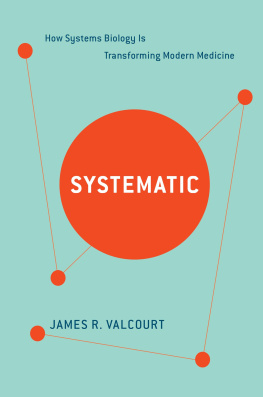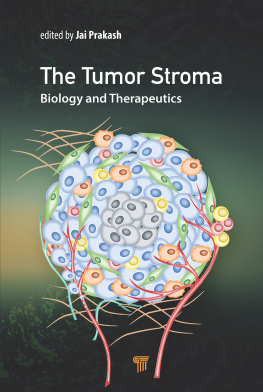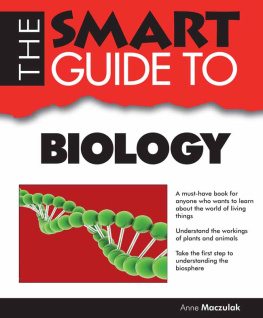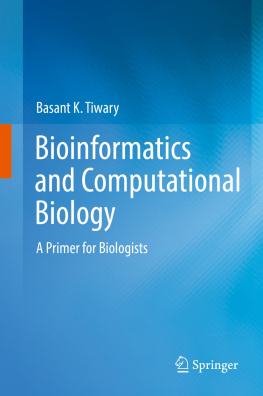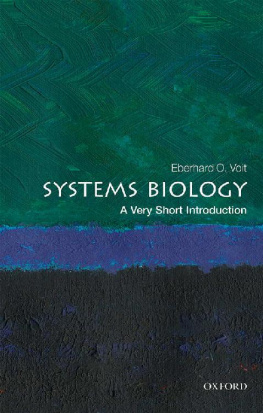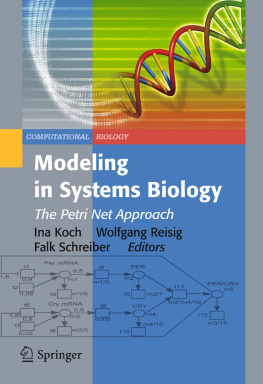SYSTEMATIC
For my family, my teachers, and
the original Broadway cast of Hamilton

- Chapter 1: Seeing the Systems in Biology:
Technological Advances Are Letting Scientists Understand Living Things in a New Way - Chapter 2: Dj Vu All Over Again:
The Common Patterns and Principles of Natural Systems - Chapter 3: Americas Next Top Mathematical Model:
Understanding Complex Systems Sometimes Requires Math - Chapter 4: Ignoring the Devil in the Details:
Robustness, Prediction, Noise, and the General Properties of Systems - Chapter 5: Beyond Tom Hankss Nose:
Sequencing Technology Is Enabling Scientists to Study All of a Cells Genes at Once - Chapter 6: The Smells of the Father:
RNA, DNA Margin Notes, and the Other Missing Parts of the Cellular System - Chapter 7: Growing Pains:
How Cells and Tissues Coordinate Development, from Egg to Adulthood - Chapter 8: No Organism Is an Island:
The Interactions between Individuals and Species that Shape Ecosystems - Chapter 9: Build Me a Buttercup:
Using Synthetic Biology to Make Diesel Fuel, Programmable Cells, and Malaria Medicine - Chapter 10: More Than Just 86 Billion Neurons:
The Science of the Brain, and How Connections among Neurons Make It Work - Chapter 11: Death and Taxes:
Aging Is Governed by an Organism-Wide System that We Might Be Able to Manipulate - Chapter 12: Your Microbiome and You:
The Body Is Host to Trillions of Microbes that Affect Human Health - Chapter 13: This Is Your System on Drugs:
Tweaking Biological Systems to Produce Better Medical Treatments
In introducing general readers to systems biology, I am including interesting research that is guided by the systems idea rather than pretending to provide a comprehensive or even fully representative overview of the field.
The challenge to responsibly communicate new ideas that may be revised or even discarded with future research is one I take very seriously. The reader should keep in mind that this book covers many areas of research that are rapidly changing. In some of these cases, the work is still very preliminary. I have attempted to present our best current understanding of whats happening, and I hope readers will pair enthusiasm for the progress scientists have made so far with a realization that there is still much more work to be done. I encourage the reader to check this books website at www.systematicbook.com for updates on the topics discussed herein.
Neurons are the cells that do most of the heavy lifting in your brain, but the most exciting thing a single neuron can do is fire an electrical pulse. Big deal. So can my toaster. But 86 billion neurons connected together in just the right way form your brain, which enables you to think, feel, imagine, and wonder. Thats pretty impressive for a three-pound hunk of cells.
The difference between one neuron and your brain is more than a matter of scale. Those 86 billion neurons must be connected together, and then something fundamental changes. This book is about the magic that happens when many proteins, cells, or other biological pieces are connected into a system.
In biology, connected systems underlie many complex behaviors that have historically been hard to understand. Microbes in your gut, for instance, interact closely with your body, and some evidence suggests this system might affect your weight, alter your risk of developing cancer, or even influence your mood. Bacteria can use simple systems of proteins, DNA, and other biological material to anticipate sunrise, to decide what to eat, and even to predict what kind of food they are likely to encounter next. Systems in other living things affect aging, development, and overall health. And thinking in terms of systems can help explain interactions between organisms, such as the spread of plague through gerbil populations in the deserts of Kazakhstan.
Unfortunately for the impatient scientist, the systems found in biology are enormous and complex. Each person has about 40 trillion cells, When this many parts are connected together in one big biological system, astoundingly complex behavior results. Even simple systems of just three or four components can produce sophisticated behaviors, and it is precisely these webs of interacting components that make life possible.
Systems biologythe study of connected groups of biological parts that all work togetheris relatively new. For example, the Harvard Systems Biology Ph.D. Program matriculated its first class in 2005. There is even still some disagreement about what it means to be a systems biologist. Some think its all about bringing the math back to biology research; others say its about working with huge amounts of data. But at its core, systems biology is simply the recognition that life is complex because its connected. Systems biologists want to understand how systems make lifeand all of its weirdnesspossible.
This is a book about how understanding natural systems is helping us unravel some of the biggest mysteries in science. We will explore biological systems that range in size from microscopic proteins to entire ecosystems. Despite superficial differences, these systems can be studied with similar approaches, and all of them have implications for our understanding of life or our ability to treat diseases.
Technological Advances Are Letting Scientists Understand Living Things in a New Way
Biologists were studying systems long before the term systems biology existed. Indeed, all living things are made of systems. The human body, for example, is a system made of organssuch as the heart, skin, and brainthat work together to make life possible. In turn, each of these organs is itself a system made of specialized cells that coordinate to pump blood, heal wounds, or sense pain. And each of those cells is a system made of proteins, DNA, and other microscopic biological parts.
But while scientists have always studied systems, their capacity for fully understanding them has been limited historically. A complete accounting of how a system works requires not only knowledge of each of its parts, but also an understanding of how those parts interact to make the system work. In many cases, we havent even had the technology to measure all of the systems components; it was like doing a jigsaw puzzle with half of the pieces missing.
To make progress, researchers started by breaking systems down into little pieces and studying each part individuallydoing biology from the bottom up. Some of todays scientists devoted their entire doctoral dissertations to trying to understand a single gene or protein, and for good reason: deconstructing systems into their constituent components has taught us much of what we know about biology today. But we now also have the capability to start putting those pieces back together to understand how they make life work. Thats systems biology.
To finally have the ability to grapple with systems in earnest took great effort by many scientists, such as Dr. Eric As a young researcher at the European Molecular Biology Laboratory in Heidelberg in the early 1970s, Wieschaus was focused on understanding the biological machinery that governs fruit fly development. Fruit flies, like most complex life, start out as a fertilized egg, and Wieschaus wanted to know how the complex adult fly can come from such a simple beginning.

